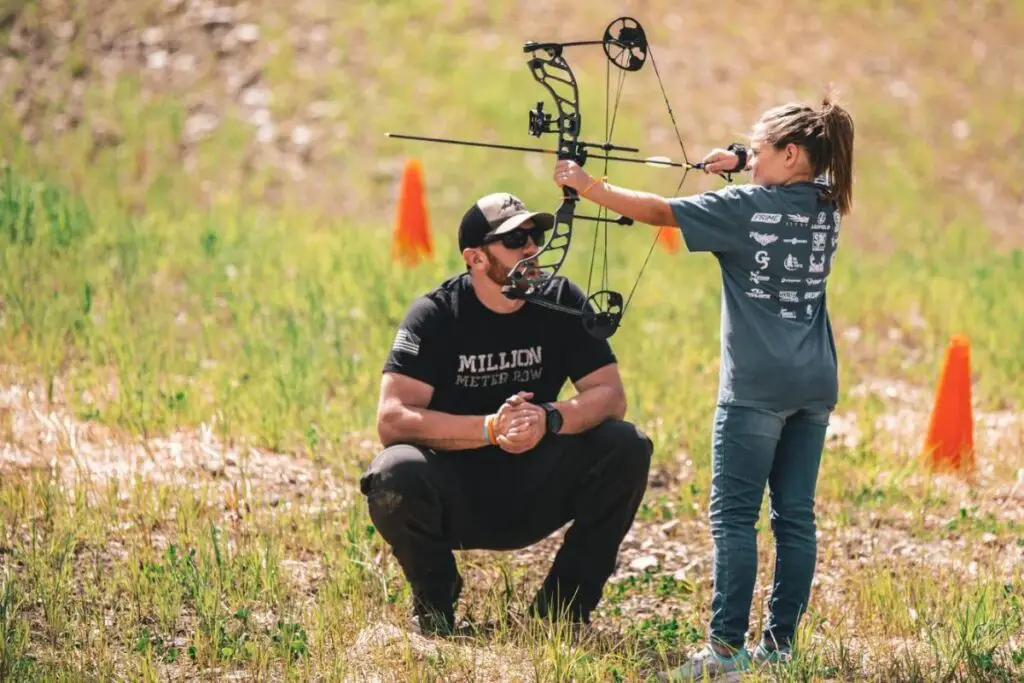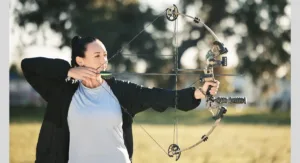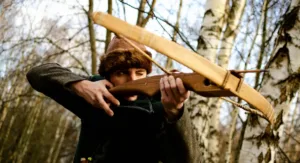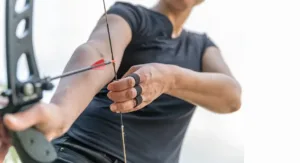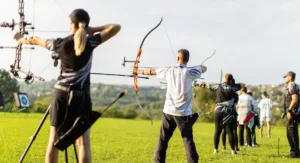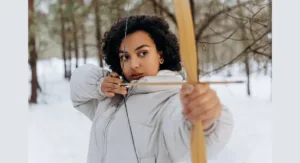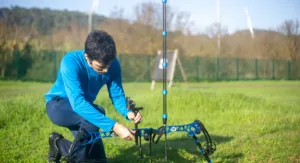Are you ready to take your hunting skills to the next level? Bow hunting offers an immersive experience that connects hunters to their primal instincts, blending time-honored traditions with modern techniques. Whether you’re standing on the precipice of your first hunt or looking to refine your skills, this guide will walk you through the essentials of bow and arrow hunting.
From the basics of choosing the right gear to mastering stealth and tracking, you’ll be equipped to venture into the wild with confidence and competence.
An Introduction To Bow Hunting For Beginners
What Is Bow Hunting?
Bow hunting is an age-old practice that combines skill, patience, and knowledge. Unlike firearms, hunters must engage closely with their environment, relying on precision and technique.
Historically, bow hunting was a necessity for survival, but today it’s a sport cherished for its challenge and connection to nature. With advances in technology, hunters can choose from a variety of bows, each offering unique benefits suited to different styles and preferences.
Selecting The Right Bow
Selecting the right bow is crucial for any archer. There are various types of bows to consider, including recurve, compound, and crossbows.
- Recurve bows are traditional and simple, favored for their elegance and smooth shooting.
- Compound bows feature a system of pulleys that make them easier to draw as they reach full draw, increasing accuracy and power.
- Crossbows provide high precision and are easy to handle, ideal for firearm hunters.
To find the most suitable beginner bow, consider factors like draw weight, length, and comfort level. Check out Archery Trade Association’s guide for detailed product reviews and recommendations.
Also Read : Hit The Target With This Ultimate Guide To Archery For Beginners
Beginners’ Essential Gear
Starting your bow hunting adventure requires more than just a bow and arrow. You’ll need a complete set of gear to ensure success and safety in the field.
- Arrows and Broadheads: Choose arrows that match your bow’s specifications. Broadheads, available in fixed and mechanical types, are critical for clean kills.
- Quivers keep your arrows organized and accessible.
- Arm Guards and Finger Tabs protect you during shooting.
To assemble your kit on a budget, look for second-hand gear or explore package deals that offer discounts. Websites like Field & Stream provide comprehensive gear reviews and buying guides.
How To Get Started Bow Hunting
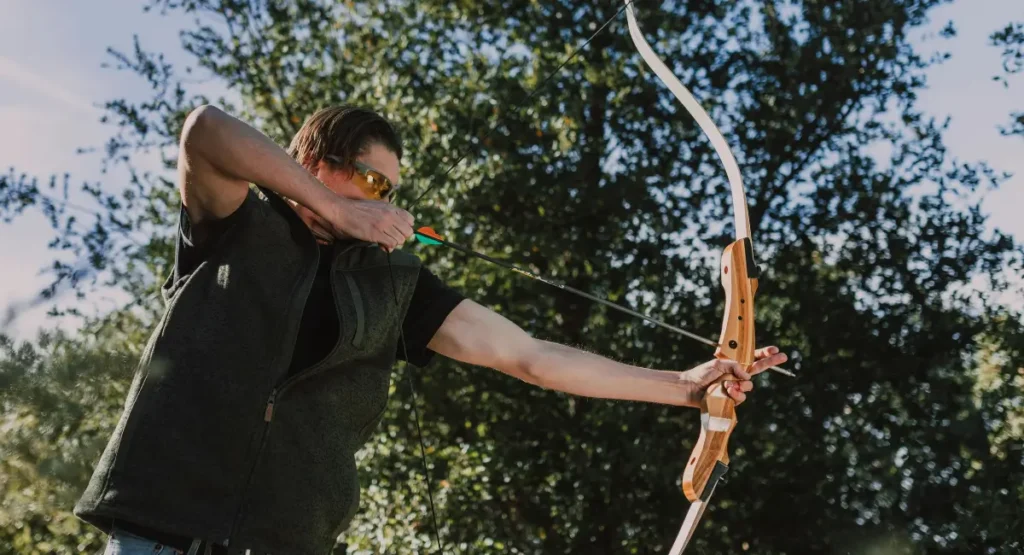
The Basics Of Shooting
Mastering the art of shooting a bow involves understanding proper form and technique. Here’s a step-by-step guide to get you started:
- Stance: Stand with your feet shoulder-width apart, perpendicular to your target. This provides balance and stability.
- Draw: Use the back muscles to draw the bowstring smoothly to your anchor point, typically at the corner of your mouth.
- Aim: Focus on a small point on your target, using your dominant eye to line up the shot.
- Release: Gently relax your fingers to release the string, maintaining your position until the arrow hits its mark.
Visual aids, such as diagrams and instructional videos, can be invaluable for visualizing the correct form. Check out tutorials from Archery 360 for detailed visuals.
Safety First: Bow Hunting Safety Tips
Safety is paramount when handling any weapon, and bow hunting is no exception. Here are essential safety measures:
- Proper Clothing: Wear camouflage to blend in, but also include bright orange for visibility to other hunters.
- Safe Shooting Zones: Ensure your shooting area is clear of obstructions and bystanders.
- Maintain Your Equipment: Regularly inspect your bow and arrows for damage.
A real-life example of safety in practice can be drawn from The Pope and Young Club, where they emphasize the importance of ethical hunting and safety education.
Practicing Before The Hunt
Practice is the key to bow hunting proficiency. Set up a backyard range to hone your skills. Advanced techniques like gap shooting and instinctive shooting can enhance accuracy. To improve consistency, focus on breathing techniques and steady posture.
Consider setting up a target range with varying distances to simulate real hunting scenarios. This will prepare you for the unpredictable nature of the hunt and enhance your adaptability.
Also Read : Traditional Archery For Beginners – Getting Started
Advanced Techniques For Beginners
Mastering Stalking And Stealth
Stealth is a critical aspect of bow hunting, allowing you to get close to your prey without detection. Here’s how to stalk prey:
- Move slowly: Patience is key. Move one step at a time, scanning the environment for signs of movement.
- Stay downwind: Keep the wind in your face to prevent animal alerts.
- Blend In: Use natural cover to your advantage, like trees and bushes, to remain hidden.
For more insights, check out video tutorials on advanced stalking techniques from Field & Stream.
Setting Up A Tree Stand Or Ground Blind
Tree stands and ground blinds can provide strategic advantages during hunts by offering concealment and a better vantage point. Here’s how to set them up:
Tree Stand:
- Choose a sturdy tree with a clear view of the game trails.
- Secure the Stand properly and test for stability.
- Use a safety harness to prevent falls.
Ground Blind:
- Position it near feeding areas or water sources.
- Camouflage the blind with natural materials.
- Leave Openings for Shooting that maintain cover.
Diagrams illustrating the setup process can be useful, so refer to resources from Archery 360 for visuals.
Tracking And Recovering Game
Successfully tracking and recovering the game is crucial after a shot. Here’s a step-by-step guide:
- Mark the spot where the animal was hit and note the direction it moved.
- Look for Blood Trails or other signs like disturbed foliage to follow the animal.
- Proceed cautiously to avoid spooking the wounded animal further away.
Real-life case studies from experienced hunters, like those shared by the National Bowhunter Education Foundation, provide valuable lessons in tracking ethics.
Also Read : Mastering The Bow And Arrow: The Fun And Easy Guide For Beginners
Real-Life Scenarios And Expert Tips
Stories From The Field
Learning from seasoned hunters can offer priceless insights. Here are some nuggets of wisdom:
- A seasoned hunter once shared how patient observation led to a successful deer hunt by anticipating the animal’s path.
- Another hunter emphasized the importance of adapting to weather changes and how it led to mastering various terrains.
These stories highlight hunting reality, emphasizing adaptability and patience.
Expert Advice
Quotes and advice from expert hunters can provide fresh perspectives.
- “The key to successful bow hunting is patience and knowledge of your environment,” advises a veteran archer from the Archery Trade Association.
- An experienced hunter from Field & Stream recommends, “Focus on consistency in practice. It’s not about the quantity of shots but the quality.”
Also Read : How To Make A Traditional Bow And Arrow: A Step-By-Step Guide
Frequently Asked Questions (FAQs)
What Is The Best Bow For Hunting Beginners?
For beginners, a reliable compound bow offers an excellent balance between ease and effectiveness.
How Do I Start Bow Hunting As A Beginner?
Begin by learning basic shooting techniques and familiarizing yourself with local hunting regulations.
What Gear Do I Need For Bow Hunting As A Beginner?
Among the essential gear you will need are a bow, arrows, broadheads, a quiver, and protective clothing.
How Can I Practice Bow Hunting Safely At Home?
Make sure you have a safe and secure backyard range with the right targets and safety measures in place.
What Are The Best Tips For Improving Bow Hunting Accuracy?
Make sure that you practice with proper form and breathing techniques on a consistent basis.
How Do I Track And Recover Game When Bow Hunting?
It is important to follow blood trails, mark the hit spot, and recover the game when it has been hit.
Conclusion
Hunting with bows is more than just a sport. It’s an adventure that connects hunters with nature and their instincts. Beginners can use this guide to get started and to continue learning and improving. You’ll be well on your way to becoming a skilled and ethical hunter if you master the techniques and absorb the wisdom shared here.
Consider exploring additional learning materials on the recommended websites. As you hone your hunting skills, share your experiences and join the conversation with fellow hunters.
Recommended Articles
- Best Compound Bow For Women – A Comprehensive Buyer’s Guide
- A Comprehensive Guide To Pick Best Budget Crossbows
- The Ultimate Guide To Choosing And Maintaining The Perfect Bow And Arrow String
- Archery Injuries: Navigating The Path To Safety
- Unveiling the Intricacies: Anatomy of a Bow Decoded
- Discover The Power Of The Best Archery Stabilizer For Accuracy And Precision

